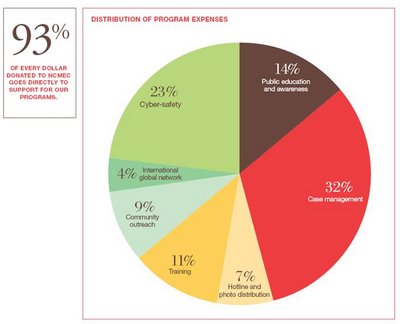This would indicate on average they trained @ 20,444 individuals per year. The Fiscal year 2005 training budget, from their annual report for last year, was $4,336,861 so at least for FY 2005 it would average @$212 per individual. If you look at their course offerings which are fairly extensive, and the fact they pay expenses to attend the courses, possibly allocation of training expense is an issue as it represents only 11% of the total program expenses.

These are the costs incurred to attend training, and what is provided?

*Continental breakfast and buffet lunches will be provided at all training sessions in NCMEC facilities in Alexandria, VA, and Rochester, NY.
This would appear based on the available training schedules to be only a fraction of the educational services they provide as the courses don't include LOCATER training etc.
NCMEC Training


 Proclaimed National Missing Children’s Day by President Ronald Reagan in 1983, May 25th serves as an annual reminder to make child protection a national priority.
Proclaimed National Missing Children’s Day by President Ronald Reagan in 1983, May 25th serves as an annual reminder to make child protection a national priority.


